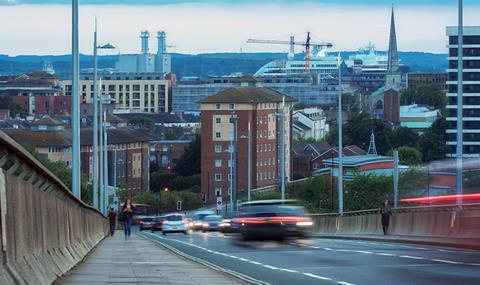
The number of bridges unable to carry HGVs is on the rise, according to the RAC Foundation, which recently found that thousands of bridges across Great Britain could be categorized as substandard.
The charity compiled data from 204 local authorities, which found that 3,441 (4.6%) bridges in England, Scotland and Wales are not fit to carry the heaviest vehicles on the roads.
Of the 10 local authorities with the highest proportion of substandard bridges, six were London boroughs. Redbridge was the worst offender, with all 25 of its bridges found to be substandard.
However a spokesman for Redbridge Council contested this figure.
He told MT: “We don’t recognise these figures as being accurate or factually correct. The RAC survey does not pertain to the structural integrity of the bridges and in fact some of the 25 listed are not even Redbridge owned.
"We therefore definitely refute the claim that all of our bridges are substandard.”
The condition of the bridges appears to be deteriorating, as last year’s research on the subject identified 3,203 bridges as substandard.
Funding issues
Of the affected bridges, councils said they wanted to bring 2,077 up to standard but did not have the funding to do so.
The backlog of work on the bridges in need of it would cost an estimated £5bn; a sharp increase on last year’s figure of £3.7bn.
Wigan had the second highest proportion with 100 of its 158 bridges flagged up(63%).
The Local Government Association said that local authorities needed support from central government to keep road infrastructure up to standard.
Local authorities with the highest proportion of substandard bridges
Local authority | Number of bridges | Substandard bridges | Proportion |
Redbridge | 25 | 25 | 100% |
Wigan | 158 | 100 | 63% |
Hammersmith and Fulham | 4 | 2 | 50% |
Lewisham | 36 | 17 | 47% |
Blackpool | 21 | 9 | 43% |
Bristol | 140 | 52 | 37% |
Haringey | 36 | 11 | 31% |
Newport | 50 | 15 | 30% |
Islington | 7 | 2 | 29% |
Kensington and Chelsea | 4 | 1 | 25% |
Councillor Martin Tett, transport spokesman for the LGA, said: “Councils are doing what they can to ensure that our roads and highways infrastructure continue to connect our businesses and communities with each other in the face of increasing budgetary pressures. However, they need long-term and sustained investment from central government.”
Prioritise infrastructure spending
The FTA said that while on some bridges a weight restriction will always be necessary, the RAC Foundation’s findings indicated a need for more infrastructure spending from local authorities.
The association’s head of urban policy Natalie Chapman told MT: “Any kind of weight restriction on a bridge that affects our industry is done because of the structure. So it’s difficult to oppose because you can’t put trucks on it and cause a bridge to deteriorate more and collapse.
“But it is a concern that stretched budgets that local authorities have is that infrastructure is not being properly maintained, and bridges are part of that.”
The RHA said the RAC Foundation’s publication was an indication that British road infrastructure needed urgent investment.
RHA director of policy and public affairs Rod McKenzie said: "These figures highlight the shocking state of Britain’s road infrastructure, of which bridges are a part. We are simply not spending enough on Britain’s roads given the amount of wear and tear and use they are getting from all motor vehicles.”














